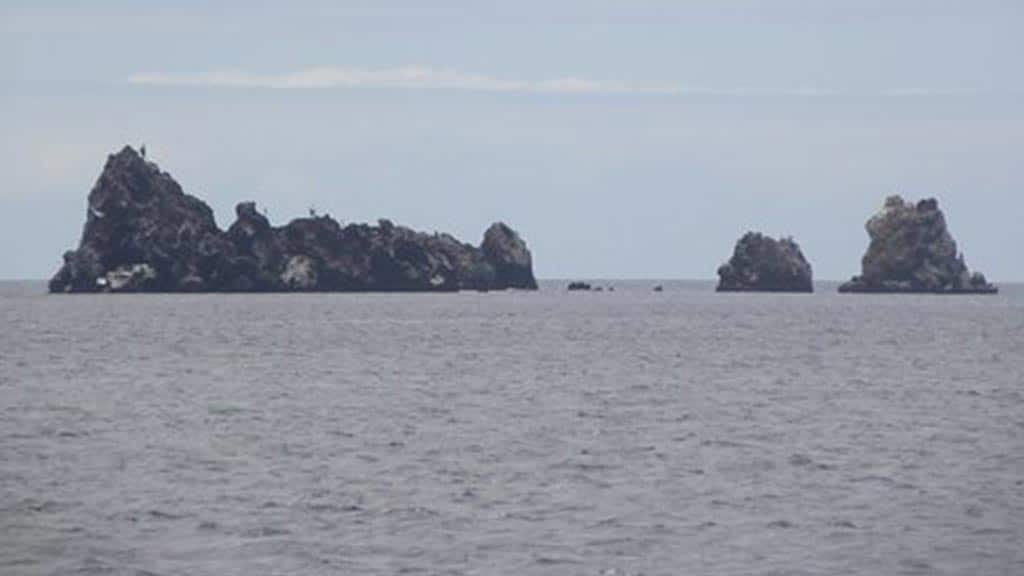Floreana Island, Galapagos (Isla Floreana)
Floreana Island is interesting in that it offers visitors a different Galapagos experience from the norm. Like most other Galapagos Islands, Floreana is home to fabulous wildlife, but, it also boasts a fascinating human history of pirates, whalers, and intrepid early settlers. Floreana Island is where the events of the famous Galapagos Affair mystery took place. It's also home to one of the world's most unique post offices, where no stamps are required. Combine that with one of the very best Galapagos snorkel sites at Devil's Crown, and Sea Turtle nesting sites, and I'm sure you'll agree that Floreana Island is worthy of your time. We highly recommend considering Floreana Island in your Galapagos vacation itinerary.
Keep reading for everything you need to know to plan your visit to Floreana Island at the Galapagos. What wildlife can you see? Which Floreana Galapagos visitor sites are a must? How to visit the Devil's Crown snorkel site? Plus learn all about the tall tales of Floreana’s human history.
SECURE YOUR GALAPAGOS TRAVEL
Get a FREE personalised quote todayFloreana Island Galapagos Wildlife Highlights
• Floreana's Cormorant Point is one of the top spots to see the Galapagos Flamingo. During breeding season visitors can witness their beautiful courtship dance and peculiar nesting behavior.
• Green sea turtles come to Floreana Island shores from December to May to lay their eggs on the beach.
• Floreana island is home to the rarest Galapagos mockingbird species, found on nearby Champion & Gardener islets. Today there are fewer than 200 surviving individuals, so conservation efforts are in full swing to protect them.
• Devil's Crown is a wonderful Galapagos highlight for underwater lovers. The snorkeling here is second to none, with a huge array of colorful Galapagos fish, reef sharks, Galapagos sea lions, and sometimes even Galapagos penguins.
• Most of the usual Galapagos wildlife suspects can also be found on Floreana Island, including marine iguanas, blue-footed boobies, red-billed tropicbirds, Lava Herons, Galapagos hawks, Darwin finches, and much more!
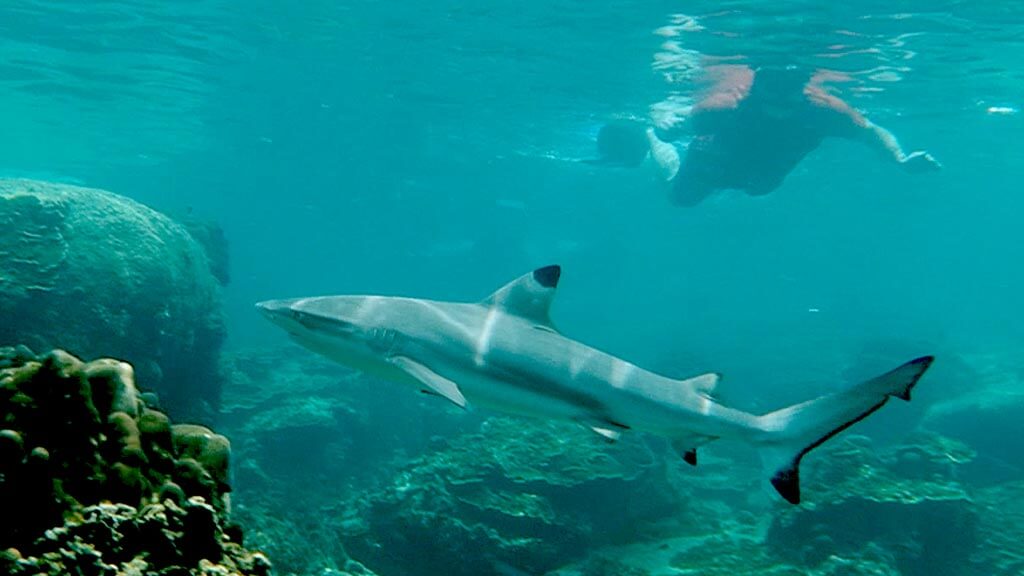
About Floreana Island
English Name: Charles.
Ecuadorian Name: Floreana or Santa Maria.
Total Area: 107 sq miles.
Population: approx 150 human inhabitants.
Floreana Island Geology
Floreana is an ancient Galapagos shield volcano. The oldest lava found here dates back to 1.5 million years ago, making Floreana one of the older islands of the Galapagos archipelago. In contrast to the other major islands, Floreana does not have a well-developed volcanic crater at its center. But visitors can see clear evidence of ash deposits and lava flows, with over 50 scoria cinder cones onshore and 6 tuff ash cones offshore. These are formed by layers of compacted ash from historic eruptions.
Floreana Island Galapagos History
Without question, the island of Floreana boasts the most colorful human history of all Galapagos islands.
Let’s start with names, why does Floreana Island have 3 different names? The original name, Charles, came from the English, in honor of King Charles II. In common with all Galapagos islands, the English names were later replaced with Spanish ones. So Charles Island became Santa Maria Island, named after one of the ships used on the voyage of Christopher Columbus. The common present-day name of Floreana comes from Juan José Flores, who was the first president of Ecuador and was governing when Ecuador took possession of the Galapagos archipelago. Confused? Don’t be, today everyone at Galapagos refers to the island as Floreana.
Floreana Island has always been a logical choice for human settlement as it is one of the few Galapagos islands with a freshwater source. So, pirates and whalers were regular visitors back in the 1700s and 1800s. They would use Floreana as a transport hub to restock food and water, as well as a hideout to avoid the Spanish fleet after raids. They even established an unusual post office here to send communications back home during long voyages, but more on that later. Unfortunately for the resident giant Floreana tortoises, they were used as a food supply by pirates and eventually hunted to extinction.
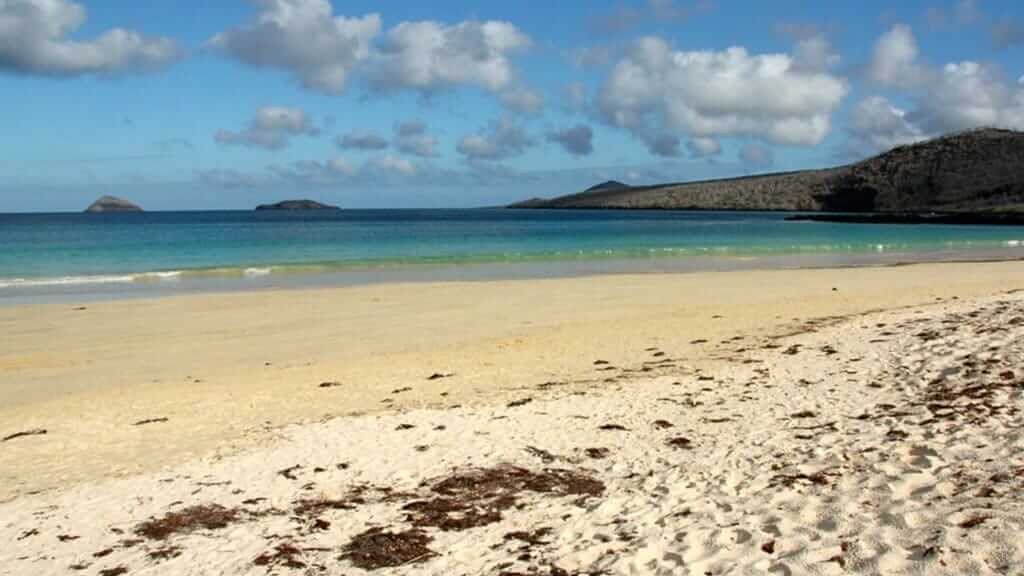
The first permanent Floreana Island settler was an Irish sailor named Patrick Watkins who found himself marooned here from 1807 to 1809. He survived by trading fruits and vegetables for rum with passing whaling ships, before stealing an open boat and sailing to Guayaquil. Colorful tales tell of his shockingly wild and savage appearance, matted red beard, and lack of clothes. There are also stories of his cunning that he used to trick passing sailors into getting so drunk they would be abandoned with him, and forced to work his plantations.
The next Floreana Island settlers were from Ecuador, who in the 1830s briefly established an unsuccessful penal colony here. Business enterprises later followed, firstly Spaniard José Valdizán in 1868 who harvested lichen using convicts sent from the mainland. Later in 1924 a fish canning plant was established by Norwegian immigrants but lasted only a couple of years.
But all of this was but a mere precursor to the most intriguing period in Floreana Island history: The Galapagos Affair.
Floreana Island: The Galapagos Affair
The Galapagos Affair is the true story of the almost unbelievable and mysterious events that occurred on Floreana Island in the 1930s. The tale relates to the exploits and destiny of three separate groups of independent settlers, each seeking their own Robinson Crusoe paradise.
Friedrich Ritter, a German doctor, was the first arrival, together with his girlfriend Dore Strauch. Ritter is renowned for removing all of his teeth in order to avoid any dental complications, and seeking a simple and sustainable lifestyle living off the land.
The German Wittmer family came next, establishing a successful agricultural lifestyle and giving birth to son Rolf – the very first person to be born on the Galapagos islands.
Life on Floreana became really interesting with the later arrival of Baroness Eloisa von Wagner Bosquet and her two lovers. The Baroness was a famously extroverted character and instantly upset the peaceful atmosphere that the other settlers had enjoyed.
Conflict was inevitable, but nobody could have imagined what was to come.

The situation came to a head with a number of unexplained and sinister goings on. One day the Baroness and one of her lovers disappeared completely without a trace. Her other lover left on a passing ship, but his mummified dead body was later found washed up on far away Marchena island (together with the ship captain). Soon after Ritter died of food poisoning, and Strauch returned to Germany where she suffered from mental health issues. This left the Wittmers as the sole survivors on Floreana Island.
What happened to the Baroness and her lover? To this day it remains an unsolved mystery. In all likelihood, it will never be solved. Margaret Wittmer passed away in the year 2000 and was the last person who could reasonably have held the key to solving the mystery.
For more information check out the Hollywood documentary “The Galapagos Affair: Satan Came to Eden“, or pick up a copy of Margaret Wittmer’s book.
Today the descendants of the original Wittmer settlers still live on Floreana, running the Wittmer Hotel for tourists.
GET FREE ADVICE
From a Galapagos destination expert todayFloreana Mockingbird Conservation
It’s not only the human residents who make the headlines on Floreana Island. Here visitors can also find a very rare and unusual feathered inhabitant, the Floreana Mockingbird.
The Floreana mockingbird was made famous by English botanist Charles Darwin. Back in 1835, Darwin came ashore at Floreana to collect bird and plant specimens for study, including that of the native mockingbird. He later developed his theory of evolution based on Galapagos mockingbird observations, noting that there were subtle differences between the species on each island.
Today, however, the Floreana Island mockingbird is listed as a Critically Endangered species. Human-introduced feral goats, dogs, and cats have devastated the natural Floreana habitat. The small remaining population of mockingbirds only survived by taking refuge on nearby uninhabited Champion and Gardner islets. The current population size of the Floreana mockingbird is estimated as fewer than 200 individuals.
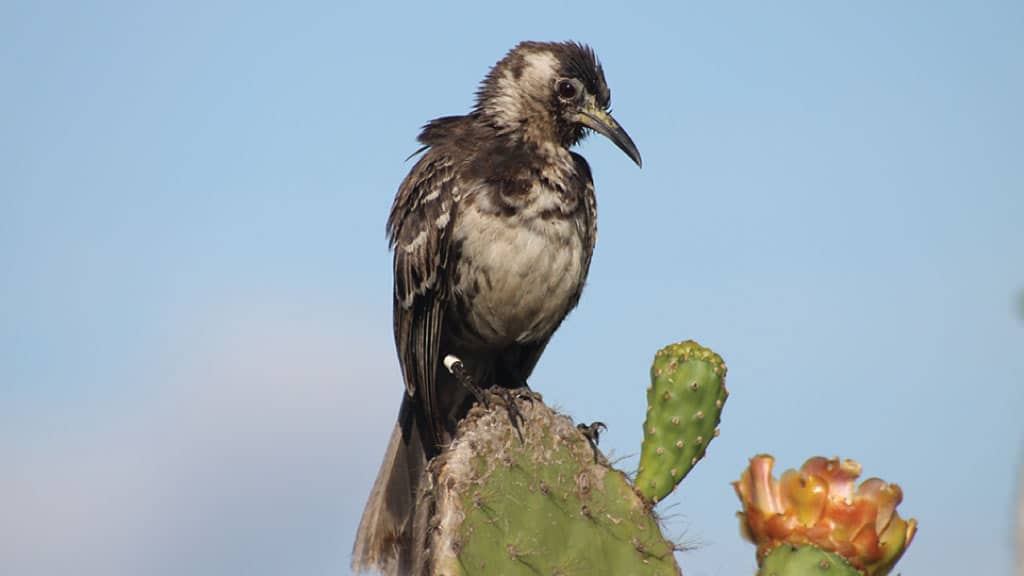
So, an immediate and concerted conservation effort is needed to protect the Floreana mockingbird. The Galapagos National Park Authority successfully removed all feral goats from Floreana in 2007. But even so, some of the damage was irreversible, and the Floreana habitat is no longer suitable to sustain some of Floreana’s native wildlife. The Charles Darwin Foundation runs an annual census to monitor the size and health of the Floreana mockingbird population. They also have future plans to repopulate Floreana Island with mockingbirds as part of the Floreana Restoration Project. Floreana's conservation work is also helping to restore healthy populations of Galapagos racer snakes, hawks, barn owls, and three species of Darwin's finch.
Where is Floreana Island?
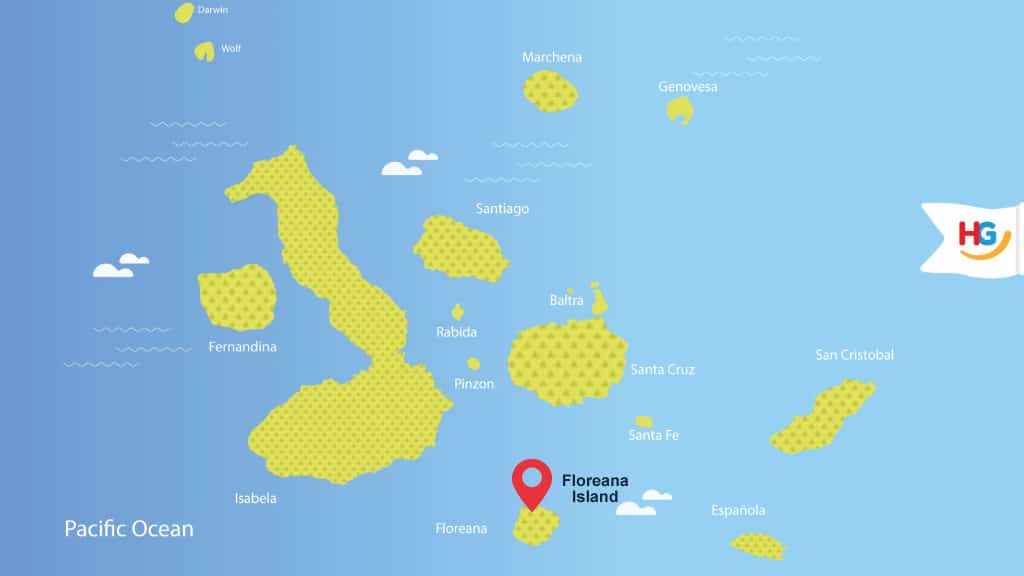
How to visit Floreana Galapagos?
The easiest way to visit Floreana Island is to jump aboard a Galapagos Islands Cruise. But, not all yacht itineraries pass by Floreana, so be sure to check carefully before booking.
Floreana day tours also operate from Santa Cruz island, but make for a very long day. A better alternative may be to stay a few nights on Floreana Island. Hotel Wittmer and Floreana Lava Lodge are two decent accommodation options, but be sure to book ahead as they are often fully booked. The other challenge is getting to and from Floreana Island using the local speedboat ferry service, which does not run every day of the week. We recommend investigating timetable information with your Floreana hotel and booking your tickets in advance.
Contact us for a FREE TOUR QUOTE, or for more information to plan your Galapagos vacation or visit Floreana island.
Floreana Island Galapagos Visitor Sites
Floreana Island offers a fabulous mix of visitor sites and activities. Visitors can enjoy historical sites, varied wildlife encounters, impressive vistas, and some of the very best Galapagos snorkeling.
1. Post Office Bay
Landing Type: Wet
Trail length: 1km
Terrain: The trail up to the Baroness viewpoint is quite steep on a sandy/rocky trail.
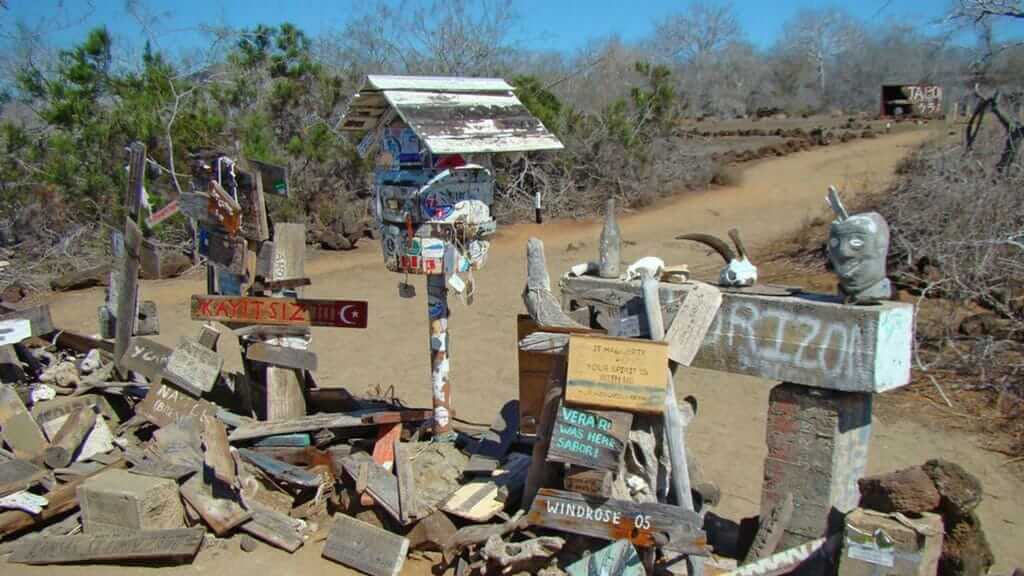
Post Office Bay is the famous site of the innovative postal service set up by whalers back in 1793.
The idea was simple, an old whisky barrel was set up as a post box to collect letters from passing sailors who wanted to write to their loved ones back home. Any passing sailor who would soon be heading back to port would sort through the mail and take any letters addressed to his hometown. On arrival back home he would then be responsible for the letter's successful delivery. It was an honor system that has worked throughout the centuries, and tourist visitors can join in the fun today. Feel free to leave a postcard in the barrel, no stamp is required. If you come across any card from your home country then take it with you to deliver in person when you get home. It's a fun way for visitors to keep an old Galapagos tradition going.
This visitor site also has access to a large lava cave, and a trek up to the Baroness viewpoint to enjoy the fine vista of Floreana’s landscape.
2. Floreana Island Highlands
The trail leading up to Floreana Island highlands is quite challenging, leading up to an altitude of 450m. Closed shoes are recommended for this trek. Transport options can also be organized in Puerto Velasco Ibarra town to make the visit easier.
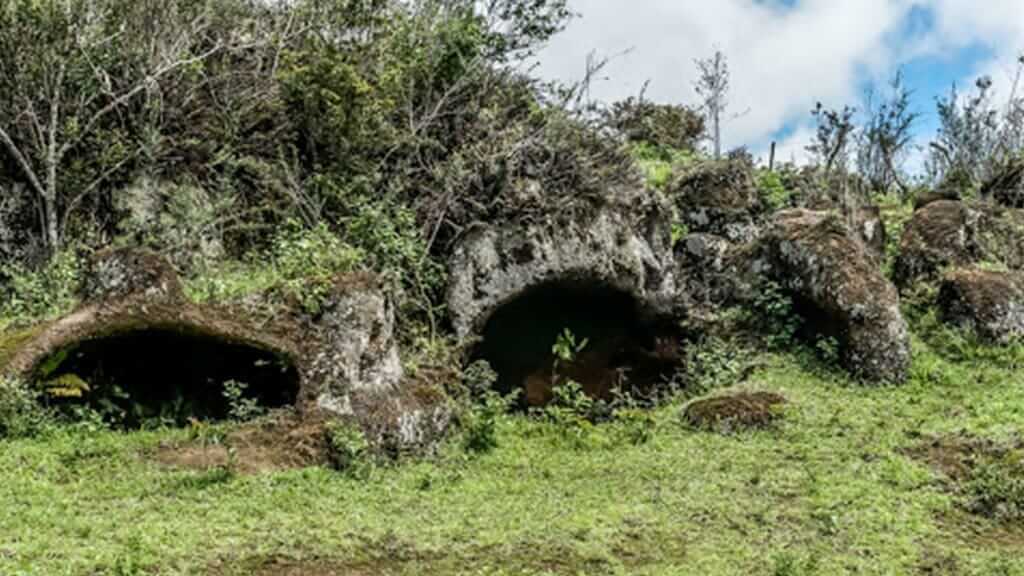
At Asilo de la Paz (Peace Haven), visitors can see the site of the Flroeana's freshwater spring that was so vital to settlers and passing ships over the centuries. There is also a small but interesting pirate cave which was once lived in. With a little imagination, you can almost picture old pirates hiding away here, with shelves, beds, and a small fireplace with a chimney made of rock. The original homesteads of the 1930s settlers can also be visited, including that of the famous Baroness.
The site of Cerro Alieri is also interesting, especially for plant lovers or botanists. Over 48 different plant species have been identified here, 56% of which are native and 33% endemic.
3. Floreana Island Black Beach
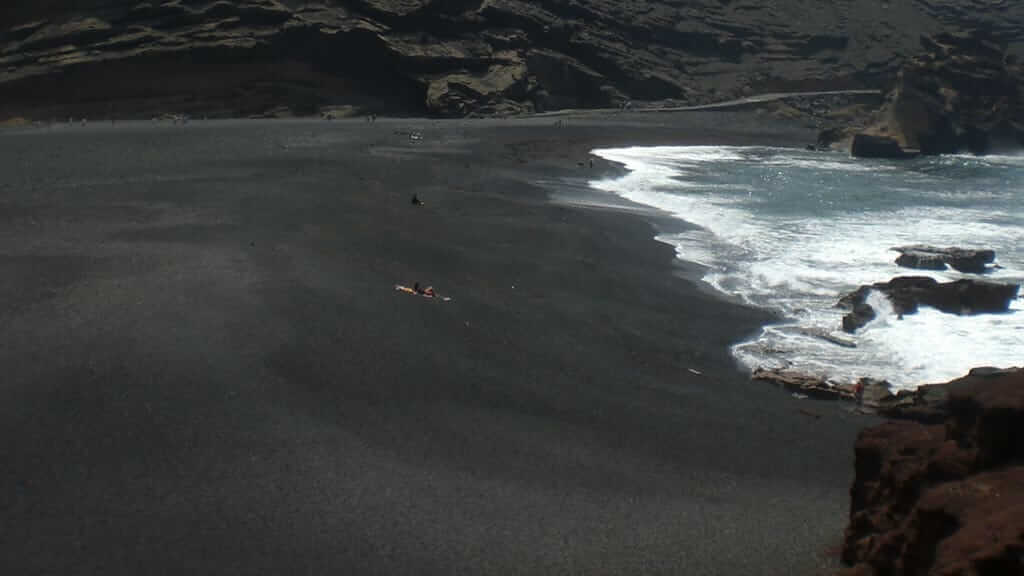
The famous Galapagos Black beach is located by Floreana’s main town, Puerto Velasco Ibarra.
The contrasting colors here make for unusual and interesting landscape photography. Most of the early settlers originally landed here, including Irishman Patrick Watkins after whom the site is named – Watkins Landing.
Today the black beach is bossed by sea lions, who love to share the water with swimmers and snorkelers. Occasionally a Galapagos penguin or sea turtle might also pass through.
Wittmer Lodge, run by descendants of Heinz and Margaret Wittmer, lies just behind the beach. Not only is this a novel place to stay, but the owners also have old photos and memorabilia that they are often happy to share with guests.
4. Cormorant Point (Punta Cormorant)
Landing Type: Wet
Trail length: 2km.
Terrain: Easy trail over flat terrain.
Flroeana's Cormorant Point is a Galapagos Cruise visitor site. Here you can enjoy a panga dingy ride along the coast looking for wildlife, an easy trek to two beaches, plus free time to swim or snorkel.
Cormorant Point has two contrasting beaches: one with green sand, the other white. The green sand beach owes an unusual color to the presence of olivine crystals. While white sand Flour Beach is made of fine, pulverized coral.
The main highlight at Cormorant Point is the flamingo lagoon. Here visitors can watch Galapagos Flamingos wade through brackish water, sifting through the mud for shrimp. Pintail ducks, stilts, Large-billed Flycatchers, several species of finch, and many other shorebirds can also be observed here.
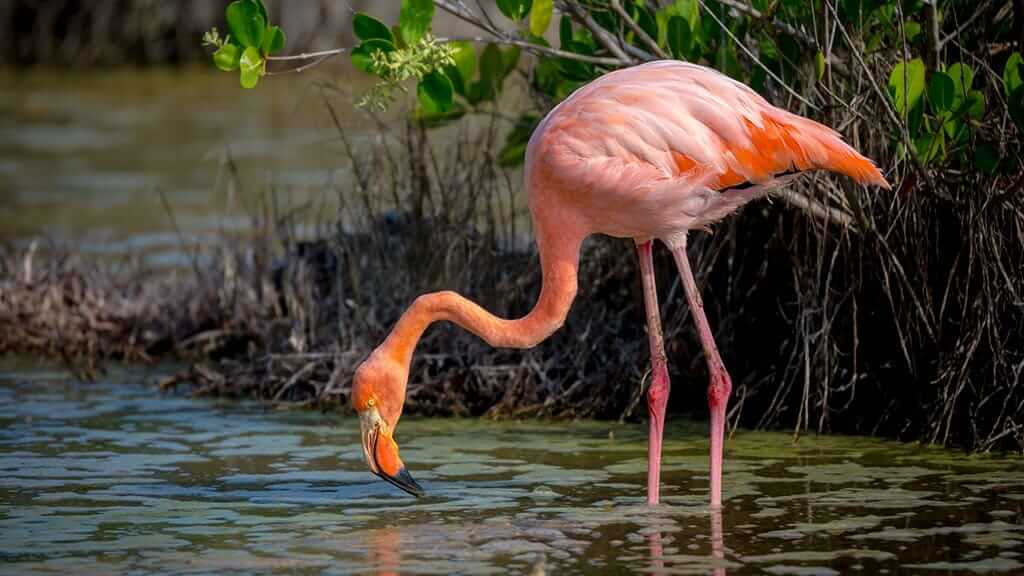
It's a short walk over a hill to Flour Beach where Green Sea Turtles nest and several species of rays and reef sharks glide through the shallow shoreline waters. Blue-footed boobies can also often be spotted diving for fish.
Floreana's Cormorant Point has a greater diversity of plants than most other areas in the Galapagos, including some endemic, to the point and surrounding areas. Be careful walking along the shore in bare feet here as Sting Rays sometimes like to hide out in the sand.
Snorkeling is only possible from the olivine beach and can provide some wonderful surprises. Sea turtles, reef fish, sea lions, and white-tipped reef sharks all frequent these waters, and penguins can occasionally be observed here too.
5. Devil's Crown Snorkeling
Floreana Island’s Devil's Crown is considered by many as one of the very best Galapagos Islands snorkel sites. The currents here are strong though, so only enter the water if you are a comfortable swimmer.
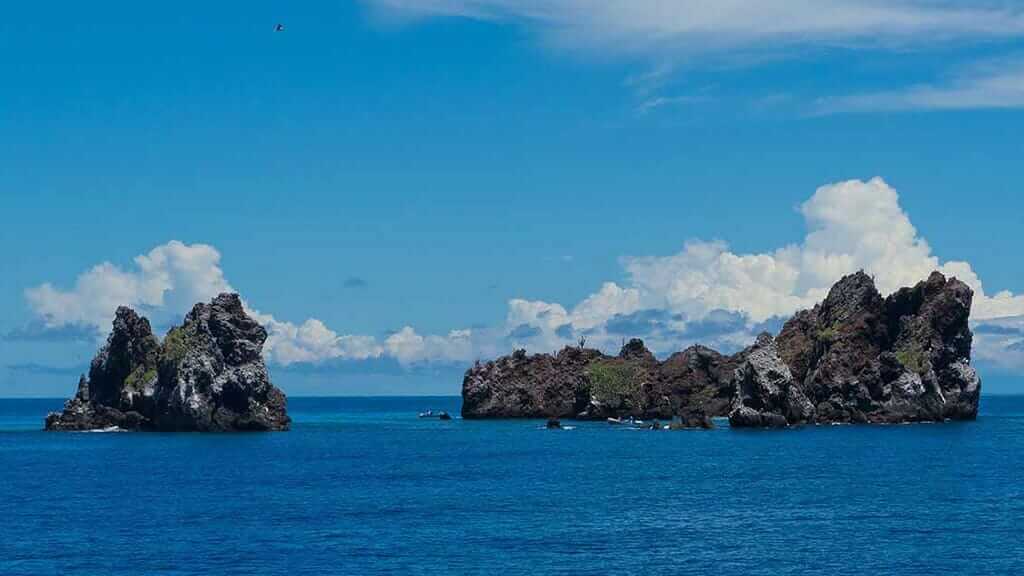
The Devil's Crown is a picturesque sunken volcanic crater. Not surprisingly it does look rather like a crown, with spikes peaking out from the ocean in a semi-circle. Coral reefs adorn the inside of the crown, attracting an incredible array of sea life. Colorful fish species are all around; look out for hieroglyphic hawkfish, Yellowtail grunts, Tiger Snake Eels, Angel Fish, Balloon Fish, Wrasse, and Amberjacks. Larger creatures like whitetip reef sharks, sea turtles, marble and eagle rays, and sea lions also love the protected reef in the Devil's Crown. If your luck is really in then you might even spot a Scalloped Hammerhead Shark or Galapagos penguin cruising through.
From the pangy dingy visitors can also spot enjoy seabirds. Red-billed tropicbirds, herons, pelicans, and blue-footed boobies nest in the crevasses of the crater walls and dive into the ocean to feed on fish.
6. Enderby, Champion and Gardner Islets
Last by not least we have various small islets off of Floreana’s coast that are often included in Galapagos cruise itineraries. Galapagos dolphins enjoy these waters, as do sea birds.
Enderby is renowned as a snorkel site with a large quantity of sharks. Gardner islet has interesting rock formations and large caves. Champion is another excellent snorkeling site. Champion and Gardner's islets are also the last refuge of the endangered Floreana Mockingbird – the only place in Galapagos where it is possible to see them.
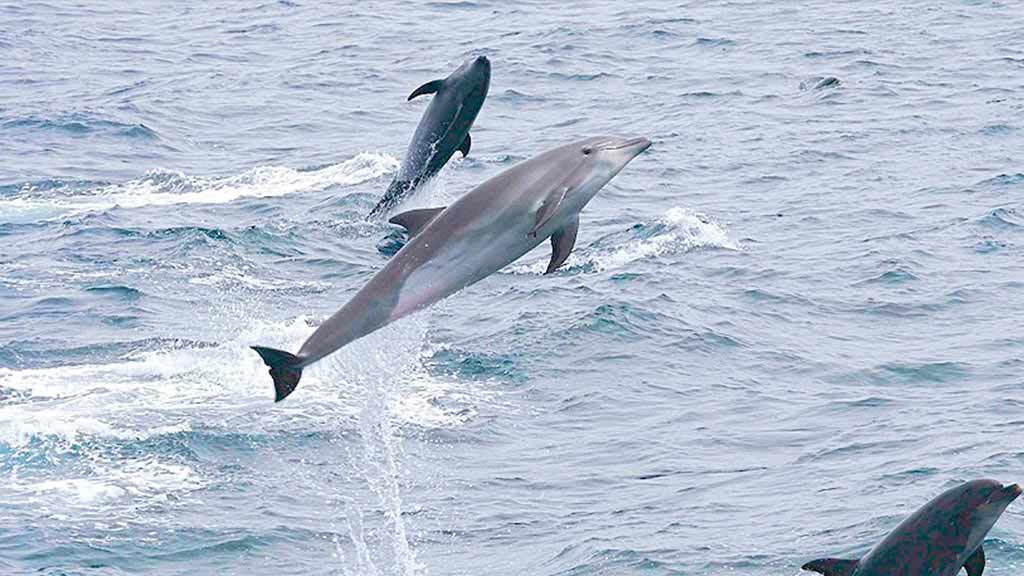
Note: All wildlife sightings are by their very nature unpredictable.
Book With The #1 Trusted
Galapagos Travel Agency
In conclusion, Floreana Island is an action-packed place for Galapagos tourists to visit. It's the best Galapagos Islands site to learn more about the unique challenges that faced early settlers. You can also delve into the mystery of the famous Floreana Galapagos Affair. The Galapagos wildlife on Floreana is also captivating, especially the diversity of marine life at Floreana Island snorkel sites. so, we hope you have enjoyed our Floreana Island blog post, and now feel inspired to visit for yourselves.



